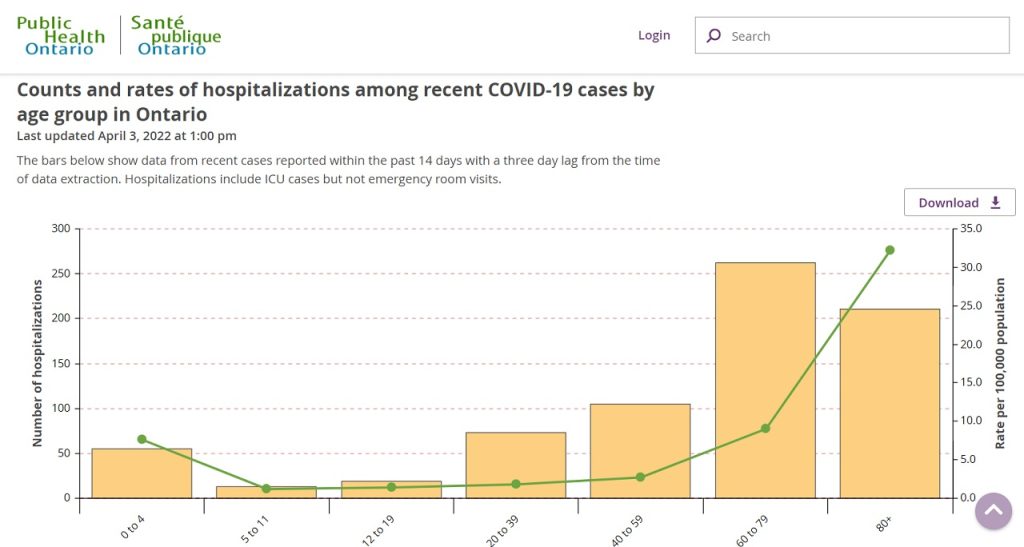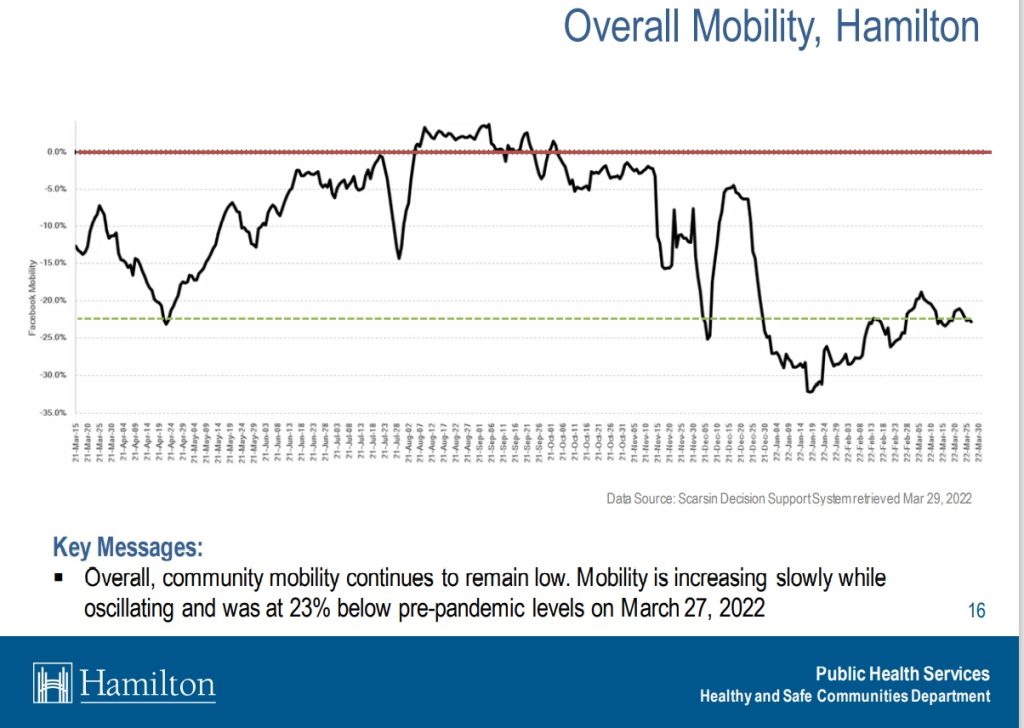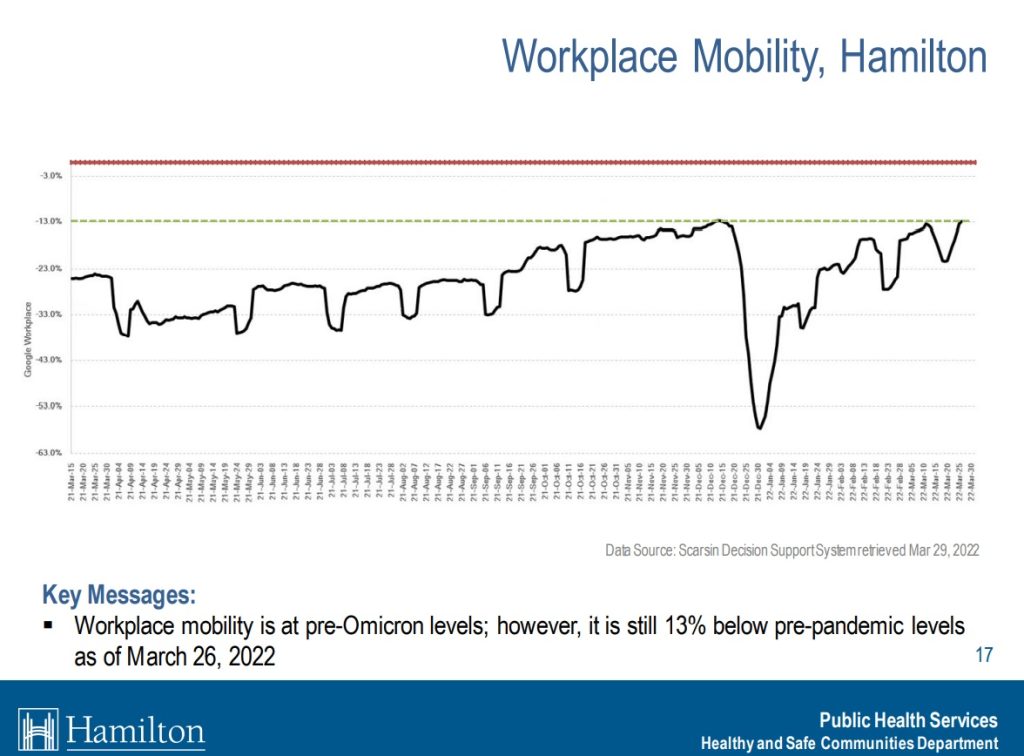Hamilton facing ‘significant vaccine hesitancy’ among the parents of 5- to 11-year-old children
Published April 4, 2022 at 11:18 pm

At a time when over 50 Ontario children under age five are hospitalized with COVID-19, vaccine uptake among the slightly older kids in Hamilton is static.
At board of health meeting on Monday (April 4), the COVID-19 vaccine manager for the City of Hamilton gave reasons as to why the uptake is lagging among children aged 5 to 11 . Hamilton is slightly behind the provincewide rate. Ontario’s rate is also third-lowest among Canada’s 13 provinces and territories.
The city’s COVID-19 dashboard says 36.54 per cent of children in that age group have had two doses of COVID-19 vaccine, while the rate is near 38 per cent provincially. First-dose coverage of 53.14 is about two per cent behind the province’s 55% rate.
“We are seeing a mix of messages,” COVID-19 Vaccine Manager Melissa Biksa said in response to a question from Ward 1 Coun. Maureen Wilson. “One, we know that there is significant vaccine hesitancy amongst parents with five to 11 year olds, who are unsure regarding, or have concerns regarding the COVID-19 vaccine, and feel that the disease progression of COVID-19 in children is lesser than in adults, feel that vaccination is not required. Particularly, with the second dose coverage at 36 per cent, we are seeing a slower second dose coverage.”
The gap in vaccine coverage seems to be at odds with Hamiltonians’ personal habits. Hamilton Public Health Services said community mobility is still well below pre-pandemic wells.
Timeline-wise, children age 5 to 11 became vaccine-eligible in November, when Health Canada approved a pediatric dose of the PfizerNBioTech vaccine.
The Omicron surge began in December, which required keeping schools on remote learning for the first two weeks in January. The province and Ontario Chief Medical Officer of Health Dr. Kieran Moore declared schools would reopen in the middle of the third week of January. At that time, schools were no longer required to inform parents about a confirmed COVID-19 case in a classroom or cohort.
Biksa related that many children in that age group were infected during the Omicron wave, which might have played into parents’ decision not to get a second dose. Vaccines against COVID-19 have also not been added to Ontario’s list of mandatory vaccinations for students.
“What we are also hearing across the province in other PHUs (public health units) is they are also having a slower uptake,” Biksa said. “A large number of 5-11 years old were infected with COVID throughout the Omicron wave. We are hearing some families feel that since they have had COVID, they have some natural immunity, and are not proceeding with a second dose.
“From a public health perspective, we can continue to encourage a full series of vaccination to ensure optimal protection against COVID-19 as well as any emerging variants.”
Earlier in the meeting, Hamilton’s top doctor, Chief Medical Officer of Health Dr. Elizabeth Richardson, acknowledged the city’s vaccination effort is “fairly stuck” in that age group.
Coun. Wilson cited those numbers in asking Hamilton Public Health Services why they thought the uptake had stalled.
“If that (the current uptake) is going to be the measure of our guard against, I would love to hear your comment on why do we think we’re stalled?” Wilson asked.
Public Health Ontario data shows that the vaccine-eligible children, those in the five to 11 and 12 to 17 cohorts, make up the smallest proportion of people currently hospitalized with COVID-19. However, the research on the effects of ‘long COVID’ is still in the early stages.
Also, in both Ontario and the United States, COVID-19 hospitalizations of children under age five — who do not have an approved vaccine — have spiked since the start of 2022. The PHO numbers show that 55 children age 4 and younger are currently hospitalized.
That is nearly double the combined total in the other two cohorts of children. Presumably, many children under age 5 would have an older sibling who is attending a public school, where masking has become optional. (Hamilton-Wentworth District School Board’s two-week extension of the masking requirement ended last Friday.)

Per Health Canada, only Alberta and British Columbia have lower second-dose uptake among five- to 11-year-old children than Ontario. The federal agency breaks down the data by sex, while Hamilton’s COVID-19 dashboard does not. Here is how Hamilton, and Ontario, compare against other jurisdictions across Canada.
| Female | Male | |
|---|---|---|
| Alberta | 30.41 | 30.06 |
| British Columbia | 36.56 | 35.61 |
| HAMILTON | 36.54* | 36.54* |
| Ontario | 37.96 | 37.77 |
| Saskatchewan | 40.38 | 40.30 |
| Manitoba | 40.71 | 40.27 |
| Yukon | 41.65 | 39.24 |
| Nunavut | 42.20 | 39.06 |
| NWT | 43.22 | 41.24 |
| Nova Scotia | 44.46 | 43.4 |
| New Brunswick | 45.02 | 43.04 |
| Quebec | 47.07 | 46.60 |
| PEI | 51.31 | 51.54 |
| N.L. | 66.18 | 62.90 |
In 12 of 13 provinces and territories, a higher percentage of girls are double-dosed than boys. Prince Edward Island is the sole exception.
The city says it has launched a new marketing campaign to try to kick-start vaccinations, especially with a BA2.variant surge expected to peak in mid-April and last through the end of June.
Hamiltonians are staying home
During HPHS presentation to the board of health, epidemiologist Dr. Ruth Sanderson did note that Hamilton residents are still limiting their social contacts.
Dr. Sanderson said that community mobility was at 23 per cent below pre-pandemic levels. The data was through March 27, a week ago Sunday.
“Community mobility has increased slowly since mid-January, but overall, remains low,” she said. “This is a good thing as it indicates that Hamiltonians may be appropriately limiting their contacts, which may help to prevent some transmission … it was not rebounded to our pre-Omicron levels.”

On the other hand, workplace mobility — people now returning to the office after working mostly or wholly remotely for two years — is closer to where it was prior to early March 2020. It is only 13 per cent pre-pandemic levels.
“Workplace mobility is now at pre-Omicron levels, which was the highest during the pandemic,” Sanderson said.







